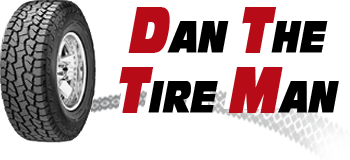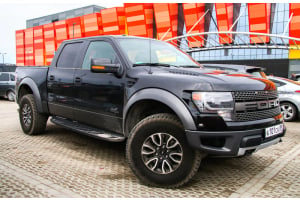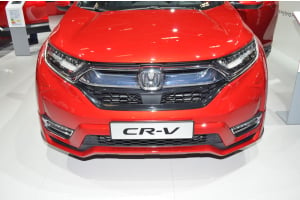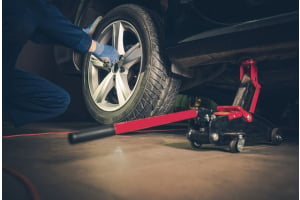
Bigger tires work well especially for trucks, but the challenging part is understanding what size you should install. Have you asked yourself “Can I put bigger tires on my truck without a lift?” Well, many factors play a big role to fit big tires on any truck i.e. ride height, recommended tire ply for type of ride, tire height, and wheel-well for driving straight and turning-radius.
Adjustment by Torsion Bar
Fitting big tires for your truck by adjusting the torsion bar is the easiest method to have your truck raised by about 1 to 1.5 inches. This works well if your truck is a 4WD type that typically uses a bar suspension system. Avoid adjusting the torsion joints up to their limit to avoid damaging the suspension system and experiencing low ride quality. Turning the adjustment bolt clockwise will raise the amount of load that can be handled by the bar, but also raise the height. Doing the opposite, will lower the vehicle by reducing the spring rate.
Fitting wheel spacers can help because you are extending the tire more outward from the chassis and fenders. Before going too far wide with thicker spacers, ensure you understand road force balance and how it can help to improve ride quality and safety.. Positioning the wheels away from the truck to avoid rubbing against the wheel wells sounds easy, but more elements play a big role such as hub bolt length, regulations on how far a tire sticks out for your state, and if the hub assembly, axels, joints have enough strength to continue giving a quality ride without wearing fast. Check the suspension and make sure it isn’t placed under too much stress because of the angles and extra weight of the tires, and road force weight.
You can use an off-road bumper alongside wheel spacers to lift big tires or trim the wheel well or fender lining to increase space. At times removing the bottom corners of the fender is needed to have enough clearance. Some manufactures, such as GMC trucks, have more squared fender wheel openings, giving it more of an issue than say a Ford truck that is more rounded and naturally gives more space to play with.
Fenders and Leveling Kits
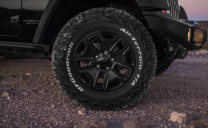
Rolled fenders are one of the answers to your question, “can I put bigger tires on my truck without a lift?” You can do this by applying heat and using special tools to have the truck’s inner lip bent above the tire in a V shape instead of an L. More space is given to the tires without having them rub against the wheel wells.
Meanwhile, the wheel wells may also be trimmed but this takes a lot of time and effort. If you choose to cut fenders, do it with care to avoid cutting away connecting pieces such as pinch and spot welds. It is always best to have a professional handle the trimming in order to avoid those wrong cuts. Accidentally trimming welded pieces can make your truck fall apart.
Leveling kits work well for big tires by raising the front to evenly lift the rear. 1.5 to 2 inches of height are usually added to the front so the front tires are given more space especially when turning left and right. Fuel efficiency will be reduced because of extra tire weight and road force.
Adjustments and Upgrades
Maybe you’re wondering, “what size tires can I put on my truck” or “what's the biggest size tires I can use”.
Trucks with big tires are advantageous because you get taller driving visibility, gravel/dirt/off-road traction, ground clearance, towing stability, stopping power, and overall height. After thinking of what size tires I can put on my truck, there are a few things to be done after the fitting.
Speedometer and Odometer Recalibration
After knowing when to change tires, recalibration of your speedometer and odometer is essential so these can match the tire size. You may see lower speed figures than the actual speed if you fail to do this. This may result in you getting speeding tickets.
Transmission Upgrade and Headlight Adjustment

Upgrading your transmission is recommended, even though it is costly. The increased tire size will make the overall transmission and differentials to work harder. More strain on factory parts leads to parts needing replacement sooner. Lastly, adjust the headlights. Trucks with big tires increase height which increases the height of the headlight beam, which will be blinding oncoming drivers and those driving in front. Adjusting the beam to point more downward will need to be done to suit local and statewide ruling on lifted vehicle safety.
Can I put bigger tires on my truck without a lift? Sure, you can! Just follow the tips mentioned above to successfully execute how to lift a truck without a lift kit. Have the big tires for your truck installed with ease and get rolling on the road with your upgraded truck. Lease-purchase financing tires and wheels would be the best option if you need to replace both at the same time due to the fact it could break your bank. Always have tires installed by a professional. Road force, tire weight, and balanced tires can reduce ride quality if not done proper.
